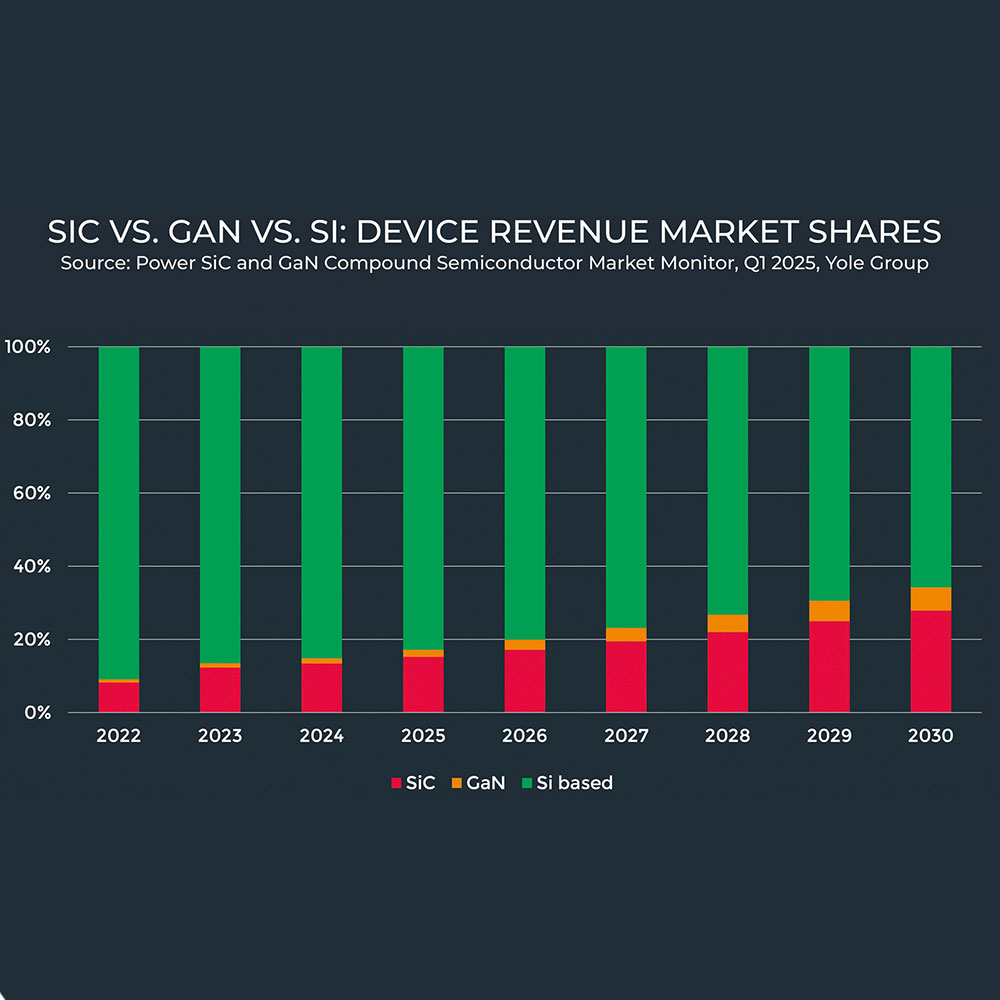Prof. Drazen Dujic, Associate Professor and Head of the Power Electronics Laboratory at EPFL
After earning my PhD, I worked in the power electronics industry for five years before moving to academia ten years ago. Having experienced both worlds, I cannot shake the feeling that they have been drifting apart for quite some time. There is an increasing divide between the academic and industrial realms regarding research activities and the role of research in general, driven by various factors, some logical and others less so, which are breaking the essential connections needed for societal, technological, and economic prosperity. No single factor can be blamed as the main cause; rather, it is a combination of changes in how industrial and academic operations have evolved, the ongoing de-industrialization of Europe, and academia’s self-indulgence in irrelevant metrics.
By definition, industries exist to create profits by offering products and services to customers. The role of the education system (academia) is to train individuals with the necessary skills, with critical and logical thinking, allowing them to participate in techno-economical exchange in local or global job markets. Overly simplified, academia is a supplier of the trained workforce (engineers) to the industry. Another part of that workforce (researchers/scientists) is specifically trained to carry out research work performed by the Research and Development (R&D) industrial departments, mainly in the »R« part. On the other hand, research work is the key activity of the academic research laboratories. How are then academic and industrial research related to each other?
Invention versus innovation
There are numerous definitions, but they all agree that invention is about creating something new or significantly improving an existing concept, method, or technology. This type of process is commonly found in laboratory or research settings, and its natural home is academia. Innovation, on the other hand, involves bringing inventions to the market, adapting them for practical use, and creating value for the end users. Hence, the process of innovation is naturally more present in the industry.
The previous paragraph is not strictly true, as almost all companies have R&D departments, where both inventions and innovations are supposed to happen. Academia predominantly cares for invention, motivated by scientific glory and eternal recognition, but increasingly, through its spin-offs and start-ups, for innovation as well. One can also buy or license the inventions of others and, through innovation, make them unique products or services, but this is beyond the point.
Nevertheless, the personnel involved in the invention process are often found behind the title of researcher or scientist and are academically trained to carry out research work. They, more often than not, have a PhD degree obtained at some university. That PhD degree makes it possible to apply for research positions at universities, research institutes, and industrial R&D departments, whatever the choice an individual is taking as a career path. The academia supplies the industry with personnel trained to carry out research work. Yet, in the last ten years or so, the European industry has been investing significantly less in academia, especially directly, further increasing the void between academia and industry. At the same time, academic research has plenty of its problems that make it less and less attractive for the industry to invest in. Why are these perspectives so different?
Academia – the cost of the research (training)
Since I work in academia now, let’s start from there. In addition to the education of undergraduate students, almost all universities offer research training through PhD programs. Hence, some freshly graduated Master’s students from anywhere in the world choose to pursue a PhD degree and enter into research training, working to acquire the skills needed to carry out independent research and make scientific and/or technical contributions along the way. Typically, this research training lasts anywhere from three to six years, and PhD students receive a scholarship or are paid a salary, depending on university or country regulations. Many other costs emerge as well, related to transversal training, equipment, consumables, IP-related overhead, university fees, travel, and dissemination of research results at conferences and in journals, networking, etc. The experience says that in Western Europe, one can easily arrive at the true cost of around 100’000 EUR per year of a PhD research training per person. Research training is not cheap; it lasts a few years, and funds must be sourced and secured for it to happen.
For us, working in academia, seeking and raising research funding takes a lot of time and effort. While there are many agencies to approach, local or EU-wide, it is a very competitive process, with typical success rates being anywhere between 10 and 20 percent. In other words, one has to write several project proposals to secure one. Whenever funding agencies aim to fund excellent scientific projects, fundamental or applied, industry needs are rather irrelevant. They may serve as mere motivation, but the quality of scientific proposals, ideas, hypotheses, research methodology, credibility, and capability of the Principal Investigator are the main judging criteria. This gives the scientific freedom to researchers (both supervisor and PhD student) to work on new theories, methods, and technologies, greatly increasing chances for creative invention and contributions to the relevant field.
Some agencies’ function is to fund a research project only in collaboration with the industry and for the sake of helping the industry (typically SMEs without research groups or capabilities). Such projects tend to be less scientific, shorter in duration, and more applied but provide a lot of opportunities for interesting work and build-up of relations with industrial partners.
It used to be, much more in the past, that industry (and here I rather have in mind large organizations with more than 1000 employees) would directly fund the university laboratory and engage in a direct collaborative research project. These projects were often considered technology scouting from the industry perspective, with a long horizon in mind, typically 5 to 10 years. Essentially, the academic role was to carry out preliminary research in a certain area, propose and develop technology directions, and de-risk further R&D efforts in the industry as much as possible. Financing a PhD student at university was and is still cheaper than paying an industry employee. At the same time, these projects were creating long-lasting relations and partnerships, and often, PhD students were hired by the company after graduation. These kinds of directly funded collaborative research projects are scarce and very hard to obtain nowadays from EU companies.
Instead, another modus operandi is widely spread nowadays. Multiple academic partners and industry partners, through a formed consortium, apply for large EU-funded projects. While on the surface, this sounds great, it is a far cry in reality. The fundamental problem is that industry can also be funded through these projects and receive, typically partial compensation, for the invested effort. Hence, the academic partner is needed to assist in fundraising for the industry rather than for actual and meaningful research collaboration and partnership. Equally goes the other way: academic partners cannot apply alone, so an industrial partner is needed to stand any chance of a project being funded. While many of these projects may be seen as a success, the true impact, if any, is hard to judge, as there is no well-defined receiver of the project results since everyone is working to deliver results to the EU administration.
Industry – the cost of research
European industry is faced with many challenges due to its decreasing technological competitiveness and slow technological adaptions, which are needed for the fast-changing world of today. Increased focus on internal optimization processes and increase of the value for the shareholders drives many big companies away from innovation in technology to creative acrobatics in the finances and restructuring. Doing research is not cheap and is a pure cost and investment into the future of the company. Unfortunately, in the modern corporate world, most of the decision-makers do not think about technology roadmaps for the next 10 to 20 years but rather on a much shorter time horizon. Closure, reorganization, or the reduction in the size of several corporate research centers of large companies in recent years only supports the notion that research is a cost that should be avoided. With the pressure from the competition and the need to react quickly and reduce the time of the development cycles, involving academia is likely just another costly disturbance that is too slow to deliver support anyhow. Research training takes time, and research as a process involves a lot of failing and trying. The desired outcomes are not guaranteed, and risks are high.
People and their responsibilities inside the companies are changing more frequently than before, and with such high volatility, it is nearly impossible to ensure continuity and stability in relations with external partners, e.g. academia in this case. If offered at all, research collaborative projects are proposed for a short duration, typically 12 to 24 months, making it hard to align it with the typical PhD duration. One may define, negotiate, and start a collaborative research project with an industry partner, only for that person to change jobs or position within a company a few months into the project, leaving continuation uncertain, hanging on the contractual agreement signed between the legal representatives. With the availability of EU funding, many companies have developed strategies to access them, and researchers in those companies spend a lot of time fundraising for the company rather than doing research for the company. An academic partner is needed for this fundraising to work, but not beyond that.
One can also go a long way about how industry may perceive academia today. Industry, while needing inventions and new technologies, clearly has no interest in the work it sponsors to be shared in the public domain, and certain, often total discretion is expected in academic collaborations. That discretion is usually seen as limiting for academic collaborators. In the past, making an academically originating invention transferred to industry and utilized in the real world was a great achievement and recognition. It still is today, but the process is too slow for modern academia, where the number of publications became the dominant metric rather than the impact of the research described inside.
The mantra of »publish or perish« is still very strong in academia, and with the introduction of the h-index (around 2005), things only got worse. While the h-index was well conceived as a metric that captures both productivity and impact, it quickly became a goal rather than the metric itself. Measuring someone’s scientific impact purely by numbers, without actually understanding contributions (if any), has greatly deteriorated the credibility of academia. It is fair to assume that the industry has seen this and decided to stay away, reduce direct involvement, or redefine the terms of collaboration altogether.
Where do we go from here?
It would appear that the present situation is not sustainable in the long term, even though both industry and academia have found their ways to carry out research works under the current circumstances. Many barriers and differences between academia and industry must be overcome: misalignment of goals and priorities, very different levels of risk tolerance, intellectual property relations, bureaucratic hurdles, communication, rewards and incentives which are very different in two worlds, but most importantly different dynamics and very different understanding of long and short-term focus. These challenges need to be addressed promptly so that European academia and European industry can unlock their potential and jointly drive invention and innovation and achieve economic and societal impact.
PCIM is a good opportunity to resume the valuable and important dialog between industry and academia. I therefore wish us all a good fair and a lively exchange. st
Have you enjoyed reading this article? Then discover the PCIM News Platform – Power & Beyond to stay up-to-date with daily news about the latest developments on the industry, products and applications, tools and software, as well as research and development at power-and-beyond.com.











